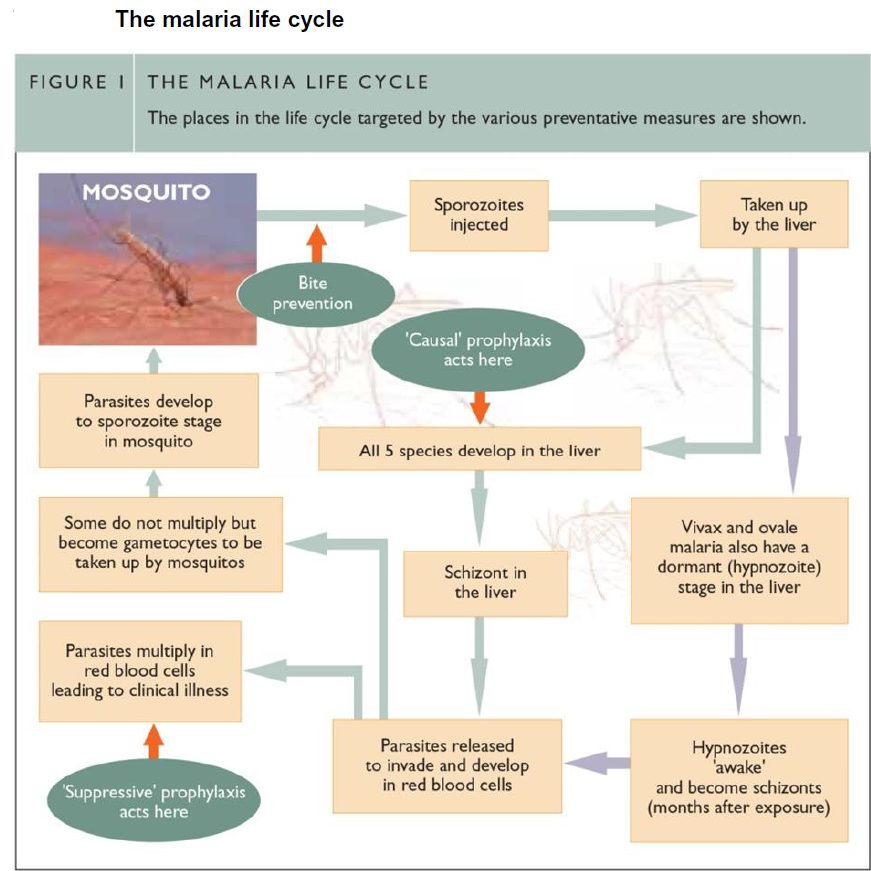Causal versus suppressive malaria prophylaxis
Causal versus Suppressive Malaria Prophylaxis
Causal malaria prophylaxis
Causal prophylaxis is directed against the liver stage of the malaria parasite, which takes approximately 7 days to develop (see life cycle diagram).
Successful drug activity at this stage prevents the parasite from progressing to infect red blood cells. Causal prophylactics need to be continued for approximately 7 days after infection
It is important not to confuse liver-stage schizonts with hypnozoites. All 5 species of human malaria have liver-stage schizonts but only P. vivax and P. ovale have the hypnozoite stage, against which causal prophylaxis is NOT effective
Suppressive malaria prophylaxis
Suppressive prophylaxis is directed against the red blood cell stages of the malaria parasite and thus needs to be taken for several weeks to prevent infection.
Therefore, suppressive prophylactic drugs should be continued for 4 weeks after leaving a malarious area.

Reference:
- Public Health England. Guidelines for malaria prevention in travellers from the UK 2019
Related pages
Create an account to add page annotations
Annotations allow you to add information to this page that would be handy to have on hand during a consultation. E.g. a website or number. This information will always show when you visit this page.